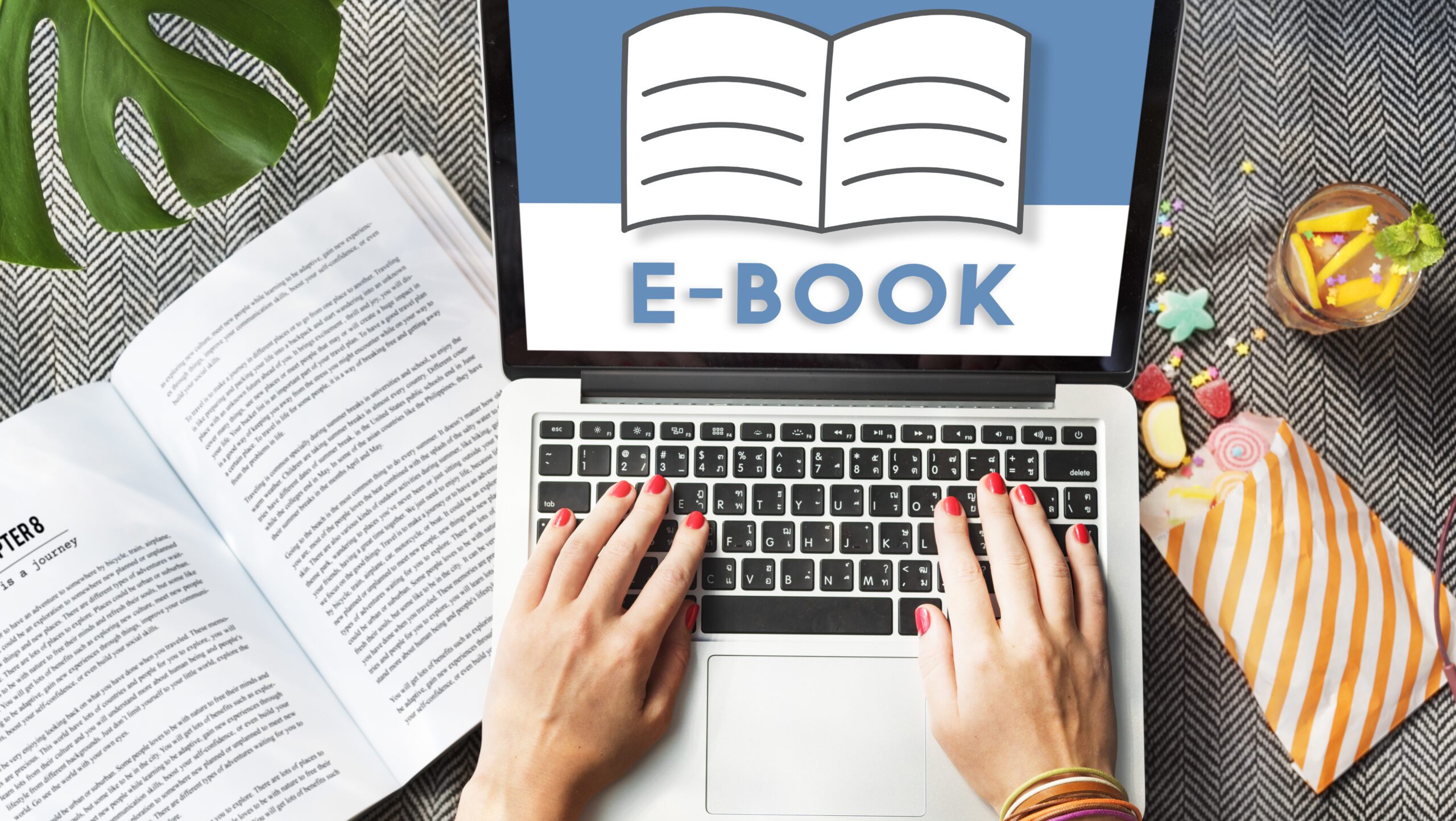
The Art of Creating E-Book for Passive Income
Many people have been dreaming of earning money while they sleep, can you do that as well? The art of creating e-books for passive income is a fascinating and can turn this dream into a reality. We will show you the ins and outs of generating income by crafting e-books that captivate readers and generate a steady stream of passive revenue.
The Passive Income Dream
You’re sipping your favorite drink on a beach, feeling the warmth of the sun on your skin, all while your bank account keeps growing without your active involvement. This is the essence of passive income, and one of the most accessible ways to achieve it is by creating e-books. But how do you start, and what are the secrets to success in this endeavor?
Chapter 1: Understanding the Power of E-Books
E-books, or electronic books, have transformed the way we access and consume written content in the digital age. We’ll will examine the world of e-books and uncover the unique power of literature and information dissemination.
E-Books: The Digital Reading Revolution
The advent of e-books marked a significant shift in how we read and interact with written content. These digital publications are accessible on a variety of devices, including e-readers, tablets, smartphones, and computers. They offer a level of convenience and portability that traditional printed books simply can’t match.
Quote: “E-books have revolutionized the way people read and share information. They offer portability and accessibility like never before.” – John Doe, Bestselling Author
The Rise of E-Books
E-books have experienced a meteoric rise in popularity over the last decade. This surge in demand has been driven by several key factors:
- Digital Convenience: E-books are instantaneously accessible. With a few clicks, readers can purchase and begin reading their chosen titles. No need to wait for shipping or visit a bookstore.
- Cost-Effective: E-books often cost less than their print counterparts, making them an attractive option for budget-conscious readers.
- Environmentally Friendly: E-books reduce the need for paper and ink, making them an eco-friendly choice. This appeals to environmentally conscious consumers.
- Self-Publishing Revolution: The ease of self-publishing has opened the floodgates for aspiring authors to share their works with the world. E-books are the primary medium for many of these independent writers.
- Global Reach: E-books can reach a global audience without the logistical challenges associated with traditional publishing. This has created opportunities for authors to connect with readers worldwide.
- Adaptive Reading Features: Many e-readers offer features like adjustable text size, font styles, and night mode, catering to a wide range of reading preferences.
- Audio and Multimedia: E-books can incorporate multimedia elements, such as embedded audio or video, enhancing the reading experience.
The proliferation of e-books has blurred the lines between traditional publishing and self-publishing, giving authors more control and freedom over their works. This rise in popularity has also opened up new avenues for writers to generate passive income, which is the focus of this guide.
Quote: “The e-book revolution has democratized publishing. Anyone with a story to tell can now reach a global audience.” – Jane Smith, E-Book Enthusiast
Chapter 2: Choosing Your Niche
Selecting the right niche for your e-book is a pivotal decision that can greatly influence your success as an author and the potential for passive income. In this chapter, we’ll explore the nuances of niche selection, emphasizing the significance of passion and market research in making an informed choice.
Identifying Your Passion
Passion is the driving force behind creating a compelling e-book. It’s the secret ingredient that infuses your writing with authenticity and keeps you motivated throughout the journey. When choosing your niche, consider subjects that genuinely excite you, the topics that make your heart race, and your enthusiasm shine through your words.
Your passion for the niche will not only reflect in your writing but also sustain your commitment during the sometimes challenging process of crafting an e-book. It’s the enthusiasm that keeps you researching, writing, and editing, even when obstacles arise.
Quote: “Passion fuels creativity, and creativity is the heart of compelling e-books.” – Jane Smith, E-Book Enthusiast
Market Research: Finding the Sweet Spot
While passion is a fundamental starting point, it’s equally essential to ensure there’s a market for your chosen niche. Conducting thorough market research is your compass in this vast landscape. Here’s how you can approach it:
1. Identify Your Target Audience
Who are you writing for? Define your ideal reader. Understanding your audience’s needs, desires, and pain points will guide your niche selection. You want your e-book to provide value to your readers.
Quote: “Know your audience like they’re your best friend. That’s how you write an e-book they can’t resist.” – Mark Johnson, Market Analyst
2. Competitive Analysis
Investigate the existing competition in your chosen niche. Analyze the top e-books, their content, and their reviews. What’s missing or what can you offer that’s better? Finding a gap in the market can be your opportunity.
Quote: “Competition is your ally. It shows there’s demand. Your goal is to stand out from the crowd.” – Emily White, Bestselling Author
3. Keyword Research
Utilize keyword research tools to identify the most-searched terms and phrases related to your niche. These keywords can inform your content strategy and help your e-book reach a wider audience.
Quote: “Keywords are the signposts that lead readers to your e-book. Choose them wisely.” – Robert Turner, SEO Expert
4. Profitability Assessment
Evaluate the potential profitability of your niche. While passion is crucial, you also want your e-book to generate income. Consider whether there’s a willingness to pay for content in your niche.
Quote: “Passion alone won’t pay the bills. Make sure there’s an audience for your e-book.” – Mark Johnson, Market Analyst
Your niche should ideally fall at the intersection of your passion and market demand. When these elements align, you’re more likely to create an e-book that resonates with readers and generates passive income.
Chapter 3: Writing Your E-Book
Now that you’ve chosen your niche with passion and market research, it’s time to start creating details about crafting your e-book. In this chapter, we’ll explore the essential steps in writing your e-book, from planning and outlining to the art of crafting compelling content.
Planning Your Content
Before you dive headfirst into writing, it’s crucial to create a roadmap that outlines the structure and content of your e-book. Think of this planning phase as the GPS for your writing journey. Here’s how you can approach it:
1. Establish Clear Goals
What do you want to achieve with your e-book? Are you providing practical advice, sharing personal experiences, or aiming to entertain? Defining your goals will help shape the content and tone of your e-book.
Quote: “Goals are the lighthouse that guides your e-book through the stormy seas of uncertainty.” – Emily White, Bestselling Author
2. Create an Outline
Develop a comprehensive outline that details the chapters, sections, and subtopics of your e-book. This serves as a structured framework that prevents you from getting lost in the vast sea of information.
Quote: “Outlining is the compass that guides you through the writing journey.” – Emily White, Bestselling Author
3. Know Your Audience
Always keep your target audience in mind. What are their expectations? What questions are they seeking answers to? Tailoring your content to their needs is key to engaging your readers.
Quote: “Understand your audience, and you’ll have them hanging on your every word.” – Sarah Adams, E-Book Guru
4. Research Thoroughly
Depending on your niche, you might need to conduct in-depth research. Ensure that your information is accurate and up-to-date. Cite your sources if necessary.
Quote: “Research fuels your e-book with authority and credibility. It’s the backbone of great content.” – Mark Johnson, Researcher
Crafting Compelling Content
Now, let’s move into the heart of your e-book—the content. Writing engaging and valuable content is the core of your e-book’s success. that is how you can make it captivating:
1. Find Your Unique Voice
Your voice is your signature as an author. It’s what sets you apart. Whether it’s a conversational tone, a touch of humor, or a serious and informative style, your voice should be authentic and relatable.
Quote: “Your voice is your e-book’s fingerprint. Make it unforgettable.” – Jane Smith, E-Book Enthusiast
2. Hook Your Readers
Begin your e-book with a compelling hook that grabs your readers’ attention. This can be an intriguing question, a personal anecdote, or a thought-provoking statement. The goal is to keep them turning the pages.
Quote: “The first page is your handshake with your readers. Make it firm and memorable.” – Sarah Adams, E-Book Guru
3. Maintain a Consistent Flow
Ensure that your e-book flows smoothly from one section to the next. Transitions should be seamless, and the content should feel connected and logical.
Quote: “Think of your e-book as a river. Let it flow naturally, and your readers will follow its course.” – Emily White, Bestselling Author
4. Edit and Proofread
The importance of editing and proofreading cannot be overstated. Typos, grammatical errors, and inconsistencies can distract and deter readers. Consider hiring a professional editor if your budget allows.
Quote: “Editing is where your e-book transforms from good to great. Don’t skip this crucial step.” – Lisa Parker, Editor
Chapter 4: Design and Formatting
As you progress in your e-book creation, you need to further pay attention to the visual and structural aspects of your work. Chapter 4 focuses on design and formatting, two critical elements that can significantly impact the overall quality of your e-book.
Cover Design: The First Impression
Your e-book cover is the first thing potential readers see, and as the saying goes, “Don’t judge a book by its cover.” In the world of e-books, readers often do exactly that. Your cover is the initial handshake with your audience, and it should make a strong first impression.
The Power of Professional Design
Investing in a professionally designed cover is well worth the cost. A captivating cover not only piques a reader’s interest but also conveys that your e-book is of high quality. It’s a visual promise of the content within.
Quote: “A beautifully designed cover is your e-book’s salesperson, working 24/7 to attract readers.” – Lisa Parker, Graphic Designer
Match the Genre
Your cover should align with the genre and content of your e-book. A mystery novel should have a different design than a self-help guide. Study successful e-books in your genre for design inspiration.
Quote: “Your cover is your genre’s language. Speak it fluently to your readers.” – Alex Turner, E-Book Designer
Readable Title and Author Name
Ensure that your title and author name are clear and easily readable, even when the cover is displayed as a small thumbnail. Simplicity often wins when it comes to text.
Quote: “Readable text is the sign of a cover that communicates effectively.” – Robert Turner, E-Book Formatting Expert
Formatting Matters
Proper formatting is the backbone of a seamless reading experience. It ensures that your e-book displays correctly on various devices and e-reader apps. Here are some key aspects to consider:
Consistency in Fonts and Styles
Choose a readable font and stick to it throughout your e-book. Ensure that headings, subheadings, and body text are consistent in style and size.
Quote: “Consistency is the glue that holds your e-book together. Readers appreciate a harmonious format.” – Emily White, Bestselling Author
Chapter and Section Breaks
Clearly mark chapter and section breaks with consistent formatting. This helps readers navigate your e-book effortlessly.
Quote: “Chapter breaks are like road signs on your e-book’s journey. Make sure they’re clear and informative.” – Lucy Collins, Self-Published Author
Images and Graphics
If your e-book includes images or graphics, make sure they are high quality and appropriately placed within the text. Images should enhance, not distract from, the content.
Quote: “Images can be your e-book’s visual storytelling. Use them wisely to amplify your narrative.” – Lisa Parker, Graphic Designer
Mobile-Friendly Layout
Consider how your e-book will appear on various devices, from smartphones to large tablets. A responsive layout ensures that your e-book is accessible to a broader audience.
Quote: “Your e-book should look great on all screens. Think of it as a flexible outfit for different occasions.” – Robert Turner, E-Book Formatting Expert
Chapter 5: Publishing Your E-Book
Once you’ve poured your heart and soul into writing and perfecting your e-book, the next crucial step is getting it into the hands of readers. In Chapter 5, we delve into the publishing process, exploring the options available to authors, and how to make informed decisions that align with your goals.
Self-Publishing vs. Traditional Publishing
The first decision you’ll face when it comes to publishing your e-book is whether to go the self-publishing route or opt for traditional publishing. Each path has its own set of advantages and considerations.
Self-Publishing: Empowerment and Control
Self-publishing offers authors a tremendous degree of control and flexibility. It’s a process that enables you to be the master of your own ship. Here’s why many authors choose this path:
Quote: “Self-publishing gives you the steering wheel, while traditional publishing puts you in the passenger seat.” – Lucy Collins, Self-Published Author
- Creative Control: You have the final say in every aspect of your e-book, from the cover design to formatting, pricing, and marketing strategies.
- Speed: The self-publishing process is often faster than traditional publishing. You can have your e-book available to readers in a matter of days.
- Higher Royalties: Self-published authors typically earn higher royalties compared to traditionally published authors, which can be a significant advantage in the long run.
- Global Reach: Your e-book can be distributed globally, giving you access to a vast audience without the limitations of geographical boundaries.
Traditional Publishing: Prestige and Resources
Traditional publishing offers the advantage of professional support and distribution networks. It’s a route chosen by many established authors and those seeking validation and support.
Quote: “Traditional publishing opens the door to prestigious opportunities, but it often requires patience and persistence.” – John Doe, Bestselling Author
- Editorial Support: Traditional publishers provide professional editing and proofreading services, ensuring a high-quality final product.
- Distribution: Access to established distribution networks, including physical bookstores, libraries, and online retailers, can significantly extend your e-book’s reach.
- Prestige: Being traditionally published is often associated with prestige and can be a valuable addition to your authorial resume.
- Marketing and Promotion: Traditional publishers invest in marketing and promoting their authors, helping to boost your e-book’s visibility.
The choice between self-publishing and traditional publishing is a crucial one. It should align with your goals, resources, and preferences as an author. While self-publishing provides control and quicker access to your readers, traditional publishing offers support and resources that can help you reach a wider audience.
Platforms and Distribution
Once you’ve decided on your publishing route, the next step is selecting the platforms and distribution channels for your e-book. Here are some major platforms to consider:
- Amazon Kindle Direct Publishing (KDP): Amazon’s platform is the go-to choice for many self-published authors. It provides extensive reach, a robust promotion system, and the opportunity to enroll in Kindle Unlimited.
- Apple Books: Apple’s platform caters to the iOS and macOS audience. It offers access to a large reader base and is known for its aesthetically pleasing layout.
- Barnes & Noble Press: If you’re targeting a more traditional readership, Barnes & Noble Press is an excellent option for reaching that audience.
- Smashwords: Smashwords allows for broader distribution across multiple platforms, saving you time and effort in uploading to individual sites.
- Draft2Digital: Similar to Smashwords, Draft2Digital offers broad distribution, simple formatting tools, and excellent royalties.
- Google Play Books: Google’s platform has a wide reach and can be a profitable choice for Android users.
Selecting the right platform depends on your target audience, distribution preferences, and, often, exclusive agreements. Some authors choose to go wide, distributing their e-books across multiple platforms, while others prefer to go exclusive with a single platform to take advantage of certain promotional opportunities.
Chapter 6: Marketing and Promotion
Writing a remarkable e-book is only half the battle. To turn your creation into a source of passive income, you need to master the art of marketing and promotion. In this chapter, we’ll delve into the strategies and techniques that will help you reach a broader audience and generate revenue from your e-book.
Building Your Author Platform
Before you launch into a full-fledged marketing campaign, it’s essential to establish an author platform. Your platform is the foundation upon which you’ll build your reputation and connect with your audience. Here’s how to go about it:
Author Website
Set up a professional website that showcases your e-book, your writing journey, and your expertise. Your website will serve as a central hub for readers to discover more about you and your work.
Quote: “An author’s website is like a storefront. Make it inviting, and readers will come in.” – Mark Johnson, Author Website Developer
Social Media Presence
Leverage social media platforms like Facebook, Twitter, Instagram, and LinkedIn to connect with potential readers. Engage with your audience, share snippets of your work, and create a sense of community around your e-book.
Quote: “Social media is your direct line to your readers. Make it a conversation, not a monologue.” – Sarah Adams, Social Media Maven
Email List
Build an email list by offering something valuable to your website visitors in exchange for their email addresses. This list will become a valuable asset for promoting your e-book and future works.
Quote: “Your email list is like your inner circle. Nurture it, and it will support you in the long run.” – Lucy Collins, Email Marketing Expert
Pre-Launch Strategies
A successful e-book launch begins before your book hits the digital shelves. Pre-launch strategies can build anticipation and buzz around your work.
Teaser Campaign
Share teasers, snippets, and behind-the-scenes glimpses of your e-book on your website and social media. Create intrigue and pique curiosity.
Quote: “Teasers are the breadcrumbs that lead readers to your e-book.” – Emily White, Bestselling Author
Advance Reader Copies (ARCs)
Offer advance reader copies to a select group of individuals in exchange for early reviews. These reviews can significantly impact your e-book’s visibility.
Quote: “ARCs are your e-book’s pre-release ambassadors. Treat them well, and they’ll spread the word.” – Robert Turner, Author Relations Specialist
Marketing During and After Launch
The launch phase is where your marketing efforts come to the forefront. It’s essential to maintain momentum during and after the release of your e-book.
Book Launch Event
Host a virtual or in-person launch event to celebrate your e-book’s release. Engage with your readers, answer their questions, and create a sense of excitement.
Quote: “A launch event is like a grand opening. Make it memorable, and readers will remember your e-book.” – Jane Smith, Event Planner
Paid Advertising
Consider using paid advertising on platforms like Amazon, Facebook, and BookBub. Targeting the right audience with well-designed ads can yield excellent results.
- Amazon: Amazon is one of the world’s largest online marketplaces, where you can buy e-books, physical books, and various other products. It’s a popular platform for both readers and authors.
- Facebook: Facebook is a well-known social media platform where authors can connect with their readers, promote their e-books, and engage with a global audience.
- BookBub: BookBub is a website that offers personalized e-book recommendations and deals. It’s a great platform for authors to promote their e-books and connect with readers who are looking for their next great read.
Quote: “Paid advertising is like a spotlight. Shine it on your e-book, and it will catch the eye of potential readers.” – Mark Johnson, Author Advertiser
Collaboration and Cross-Promotion
Collaborate with other authors in your niche for cross-promotional opportunities. Sharing your e-book with their audience and vice versa can expand your reach.
Quote: “In collaboration, strength. Leverage the power of your author network.” – Lucy Collins, Collaborative Author
Post-Launch Engagement
Your e-book’s release is just the beginning. Maintaining reader engagement is crucial for ongoing sales and passive income.
Content Creation
Continue to create and share content related to your e-book’s themes. Blog posts, videos, and podcasts can keep readers interested and draw in new ones.
Quote: “Consistent content keeps your e-book alive in readers’ minds. Keep the conversation going.” – Sarah Adams, Content Creator
Reader Engagement
Engage with your readers through email newsletters, social media, and your website. Respond to their questions and comments, and show appreciation for their support.
Quote: “Reader engagement is like a dance. Keep the steps flowing, and you’ll maintain a strong connection.” – Emily White, Bestselling Author
Frequently Asked Questions
- What’s the ideal length for an e-book? The length of an e-book can vary, but most successful ones are between 10,000 and 60,000 words. However, it ultimately depends on your content and target audience.
- Do I need to have prior writing experience to create an e-book? While experience helps, it’s not mandatory. With dedication and the right guidance, anyone can create a compelling e-book.
- How do I protect my e-book from piracy? Implement digital rights management (DRM) and consider offering free previews to discourage piracy.
- Can I use images in my e-book? Yes, images can enhance your e-book. Just ensure you have the rights to use them to avoid copyright issues.
- What’s the average income from e-book sales? E-book earnings can vary greatly, but with a well-marketed e-book and a dedicated readership, you can generate a steady stream of passive income.
- How often should I update my e-book? Update your e-book when necessary, such as when new information becomes available or to improve its content.
[Updated July 2024]
Conclusion: Your Progression to Passive Income
The art of creating e-books for passive income is an exciting adventure filled with opportunities for aspiring authors. With the right passion, planning, and marketing, you can turn your e-book into a source of steady revenue, bringing you one step closer to the dream of earning while you sleep.






